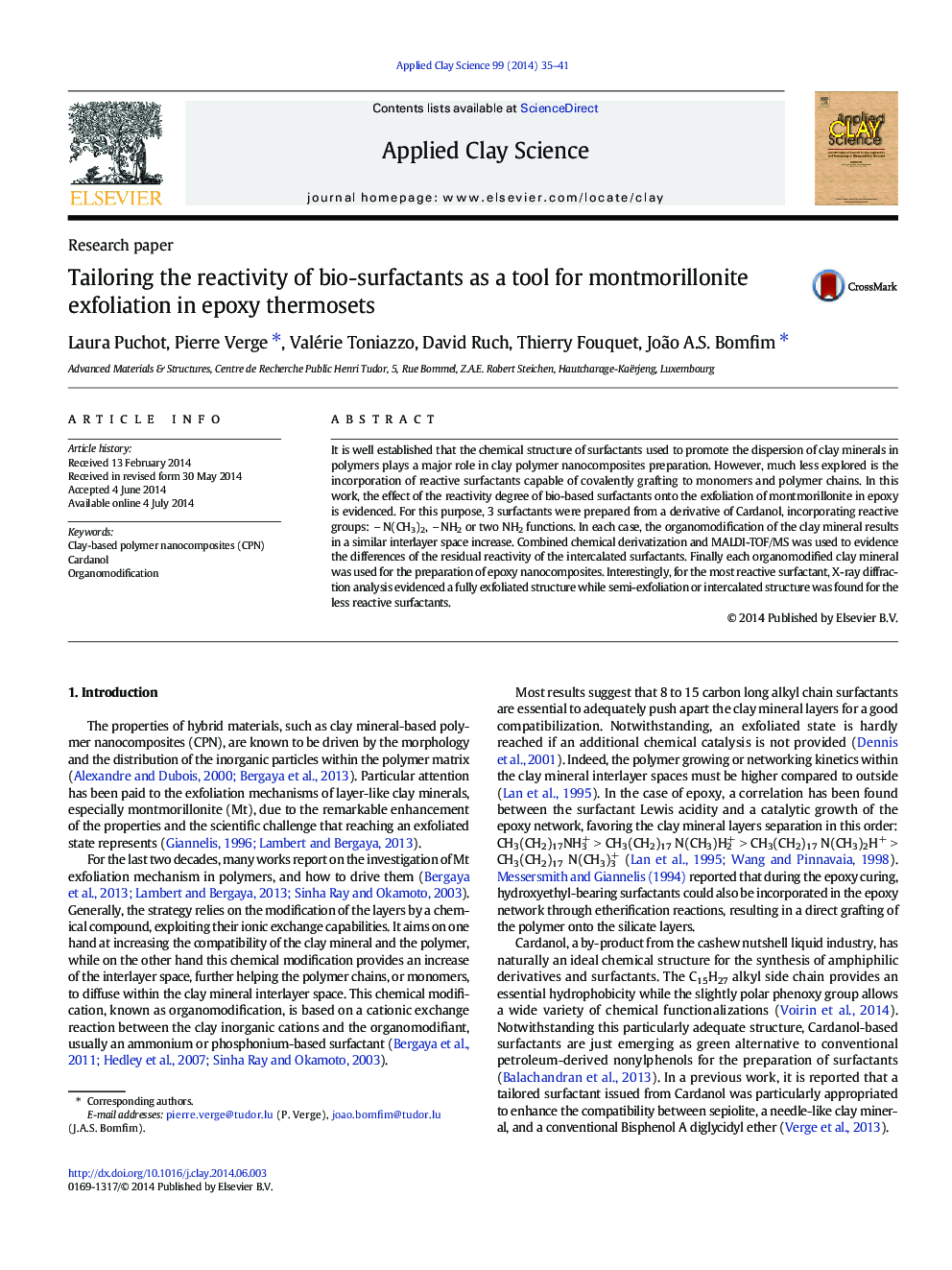| Article ID | Journal | Published Year | Pages | File Type |
|---|---|---|---|---|
| 1694731 | Applied Clay Science | 2014 | 7 Pages |
•3 surfactants prepared from Cardanol are used to organomodify montmorillonite.•Combined chemical derivatization and MALDI/MS is used to evidence their reactivity.•Each organomodified clay mineral is used to prepare epoxy nanocomposites.•A full exfoliated state is reached for the most reactive surfactant.
It is well established that the chemical structure of surfactants used to promote the dispersion of clay minerals in polymers plays a major role in clay polymer nanocomposites preparation. However, much less explored is the incorporation of reactive surfactants capable of covalently grafting to monomers and polymer chains. In this work, the effect of the reactivity degree of bio-based surfactants onto the exfoliation of montmorillonite in epoxy is evidenced. For this purpose, 3 surfactants were prepared from a derivative of Cardanol, incorporating reactive groups: N(CH3)2, NH2 or two NH2 functions. In each case, the organomodification of the clay mineral results in a similar interlayer space increase. Combined chemical derivatization and MALDI-TOF/MS was used to evidence the differences of the residual reactivity of the intercalated surfactants. Finally each organomodified clay mineral was used for the preparation of epoxy nanocomposites. Interestingly, for the most reactive surfactant, X-ray diffraction analysis evidenced a fully exfoliated structure while semi-exfoliation or intercalated structure was found for the less reactive surfactants.
Graphical abstractFigure optionsDownload full-size imageDownload as PowerPoint slide
